What Makes a Course Design Effective?
Much of the work of teaching happens before we enter the classroom. Course design is the process through which we plan what students should learn, what they should do in order to learn it, and what methods we’ll use to collect evidence of their progress. Whether a whole course or part of one (like a module or class session), our learning designs are most effective when we can bring our goals for students’ learning, the activities we facilitate to help them learn, and our assessment methods into alignment.
To understand why the alignment of these components is important, we can consider what happens in a course that is not well-aligned. If an instructor has clear goals and priorities for students’ learning, but the activities they ask students to do don’t help them make progress toward those goals, students’ efforts won’t produce the desired results. If the learning activities are aligned with goals, and students make good progress, but the assessments are not aligned, students won’t get to show all they can do, and they may not earn a grade that reflects the learning they did.
Imagine Professor X wants students in her chemistry course to be able to use scientific language to describe everyday phenomena. To assess whether they can do so, she plans to give multiple-choice exams in which students must choose the correct definition for each term from a list of four possible definitions. For practice, she plans for students to read the vocabulary words in their textbook and on PowerPoint slides and listen carefully as she uses the terminology in class. She also suggests students read the glossary when they study for the exam.
Professor X has a great learning goal for her students—she’s asking them to apply knowledge from the course to describing what they see in the world—but her methods of helping students achieve that goal, and of measuring whether they have done so, are both out of alignment with the goal. Since the exam asks students to choose the correct definition from a list, it’s testing their recognition, not their ability to use language to describe phenomena.
To test what she means to be testing, Professor X would need a different kind of assessment. She could ask students to write a few sentences describing example phenomena (e.g., explain what happens when you put a can of soda in the freezer, or why car tires might look flat on a very cold day). Or she could ask them to make short videos of themselves around campus, describing phenomena they encounter. A variety of other assessments could also be well-aligned with her goal, as long as the task provides an opportunity for students to demonstrate exactly the kind of knowledge and/or skills she wanted them to develop. Although it’s true that students might first need to memorize scientific terms and their definitions to be able to do well on such an assessment, that is just one step in a process. They’ll also need to practice recalling the terms and using them appropriately, so simply reading the textbook glossary wouldn’t be adequate practice.
Why do we assign papers and projects in the first place? Why do we give exams, or quizzes, or homework? Why do we ask students to do activities in class? All of the work we assign should provide opportunities to learn, and it should provide opportunities for students to demonstrate what they’ve learned (and what they still need to practice). If our goals for student learning are aligned with the ways we gather evidence of that learning, and if the ways we use their time are also aligned, then students who do the work can do the learning, and many will perform to the standards we’d like to see. All three of these major components of a course need to be working in harmony in order to achieve the best conditions for learning and success.
If you’d like support to align the assessments or the ways you’re using class time with your learning goals for students, we’re happy to help! You can email us at pro-teaching@fsu.edu for a consultation. We look forward to working with you!
UPCOMING…
Provost’s Showcase of Scholarly Teaching
Friday, April 5th | 1:00 – 4:00 p.m. | SSB 201/203 | Click to apply
We’re delighted to announce that CAT and FSU Libraries will host FSU’s inaugural Provost’s Showcase of Scholarly Teaching this spring. This event is an opportunity for you to share your teaching expertise and innovations with the larger campus community. Even if you’ve never thought about presenting at a pedagogical conference before, you likely have strategies and insights that could be of benefit to colleagues. We invite you to apply to host a roundtable discussion or present a poster.
If you would like to apply, please fill out our application form. The application due date is February 23, 2024. We look forward to working with you!
SPRING FACULTY & TA READING GROUPS
The Center for the Advancement of Teaching is offering the following three faculty and two graduate student (TA) reading groups this semester. Each group will meet once a week for three weeks to discuss the books in sections. We hope you can join us! Please register here.
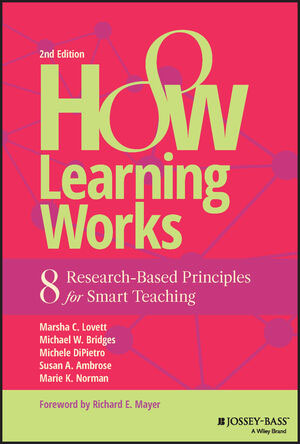
Thursdays: 2/1, 2/8, 2/15
2:00–3:30 p.m. in 432 DIF
Print copy, delivered through interoffice mailThe newly updated edition of this important book translates decades of scientific literature into practical advice, introducing eight general principles of how people learn. The authors draw on cognitive, developmental, and social psychology, as well as educational research, anthropology, etc. The discussion spans issues from memory to motivation, integrating theory with real classroom examples. Participants will develop strategies for strengthening their own teaching through the application of these principles.Click here to explore the book.
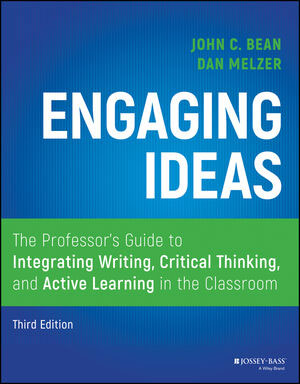
Engaging Ideas: The Professor’s Guide to Integrating Writing, Critical Thinking, and Active Learning in the Classroom
Fridays: 2/9, 2/16, 2/23
2:00–3:30 p.m. in 432 DIF
Print copy, delivered through interoffice mail
The newly revised third edition of John Bean’s best-selling classic will be the foundation of this reading group, in which we will discuss using writing as a mode of teaching and learning in any course. From formal writing projects to informal classroom activities, we will explore the ways writing can be used to help students improve as critical thinkers and effective communicators. Then, we will make plans to apply strategies Bean and Melzer describe in this new edition to enhancing writing instruction and active learning in our own courses.
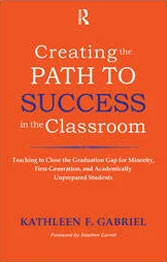
Fridays: 2/23, 3/1, 3/8
11:00–12:30 p.m. in Dirac Conference Room
Print copy, delivered through interoffice mailOver the past few decades, extensive research has shown that we can enhance student learning by adjusting our teaching practices and the ways we structure our courses. But where do we start? Kathleen Gabriel’s book provides practical strategies for building our courses to ensure that more students learn more and more deeply. Gabriel offers concrete steps we can take to enhance student motivation, structure class time effectively, prompt critical thinking, design effective assignments, and create classroom climates that promote learning.Click here to explore the book.
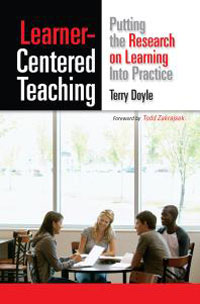
Fridays: 2/2, 2/9, 2/16
11:00–12:30 p.m. in Dirac Conference Room
E-book, available for free through FSU’s libraries
Note: This group is for graduate students only.Recent decades have brought a wealth of research on learning and cognition. These developments are gradually making their way into work on best practices for the college classroom. Doyle’s Learner-Centered Teaching is a practical, comprehensive guide to strategies for making effective use of the research. When we adjust our classroom focus from teaching to learning, we make our own work more gratifying, and we can enhance our students’ learning experience as well as their mastery of material. In this group, graduate teaching assistants will discuss Doyle’s text and specific strategies and activities for enriching our own classrooms.Click here to explore the book.
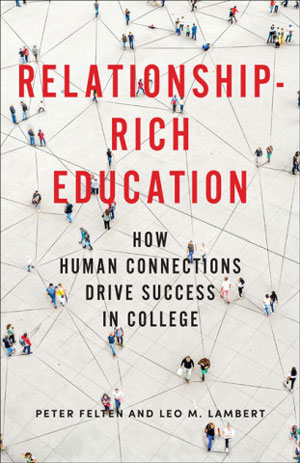
Thursdays: 2/1, 2/15, 2/22
11:00–12:30 p.m. in 432 DIF
E-book, available for free through FSU’s libraries
Note: This group is for graduate students only.Peter Felten and Leo M. Lambert argue that education is not merely a series of transactions, but instead an opportunity for students to form a web of meaningful relationships that are vital not only to their academic success but also to their sense of belonging and self-discovery. They explain that social connection and belonging are not just pleasant extras in college, but prerequisites for learning, especially for powerful learning. The book provides examples and strategies for how institutions can foster richer learning environments, and the reading group will discuss ways we can shape our teaching to cultivate community and connection in our classrooms.Click here to explore the book.



